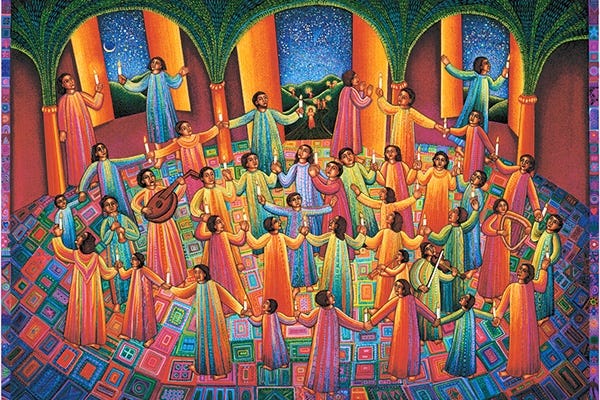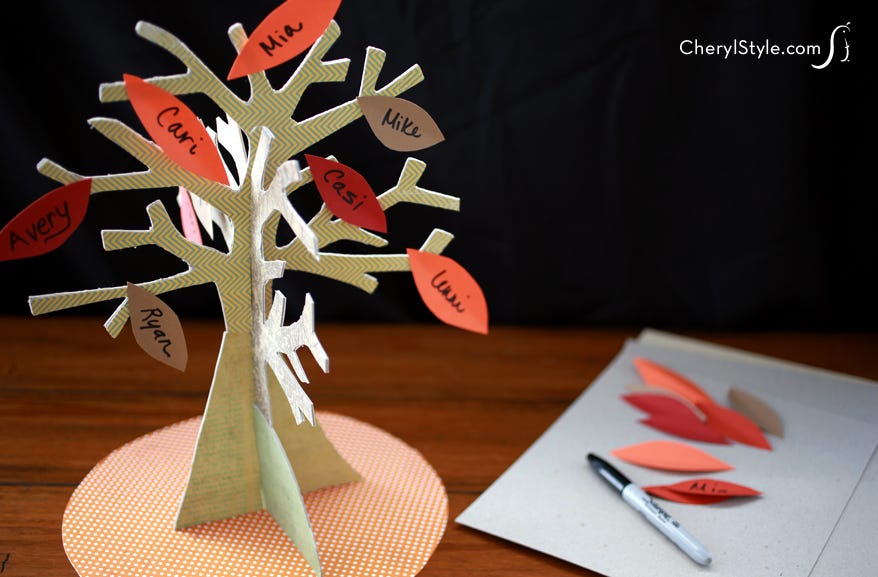Dear Friends,
This is going to make a lot of sense to my generational peers, and no sense to the rest of you, I’m afraid, but I cut my teeth on the LiveJournal version of the internet.
What I mean by that is, I learned basic HTML to customize my blog and later my MySpace page. I also built a few websites on GeoCities or some similar early aughts platform. But LiveJournal was especially important. It was where you made friends on the internet back when everyone’s mom was still afraid of chatroom goings on and actively warning you not to talk to strangers on the internet. And one thing we did on LiveJournal was filling out these little factoid surveys about ourselves that were often related to fandom or aesthetic. (I was a second wave into third wave emo kid, for reference.)
All of this is to say that I felt a small surge of delight when I saw what church Twitter was up to a few days ago. They had one of those surveys, but about theology rather than what pop-punk and Sofia Coppola’s The Virgin Suicides.
Here’s my version:
Denomination: The Episcopal Church
Ecclesial Polity: Episcopal
Eucharistic Theology: Real presence
Soteriology: Justification, mostly
Favorite father/mother: Athanasius
Favorite Post-Patristic Author: Rosemary Radford-Ruether,
Politics: cranky socialist
To be honest, this particular survey situation wouldn’t have been out of place on some corners of post-LiveJournal Tumblr about a decade ago. But why should you care?
Destined for Adoption
This week’s Epistle includes one of the more notoriously direct theological statements, in which Paul asserts the theology of Christian adoption. You’ve heard it many times – that God “destined us for adoption as his children through Jesus Christ.”
This theology does some very simple and beautiful work. It connects us all as one family through Christ, and that is a family of the saved, the family redeemed. It is a family that finds its home in the kingdom of Heaven, not on earth.
It’s also a theology that has caused great harm to actual adoptees. As adult adoptee Tiffany Henness, who is also a Christian who continues in her faith despite ways that faith has done harm, has written, adoption is a metaphor for salvation, but it isn’t a necessary piece of our salvation. More importantly, in light of how contemporary adoption is ultimately a means of fracturing families (at least in the majority of cases), it is a source of harm and thus “adoption is not gospel; because if the gospel is not good news to everyone then it is good news to no one.
(If you haven’t thought much about the history, politics, and theology of adoption, I recommend exploring more of Tiffany Henness’s writing, including her original piece on adoption as metaphor and her extension of that writing in part 1 and part 2 on the Calling in the Wilderness blog.)
Adoption is often considered to be what comes after justification (my soteriology of choice – I was raised ELCA after all), but it’s important that we understand it as metaphorical language, as Henness points out, and that we understand the history and translation that brings us this particular Bible passage. And we need to do this work, build this understanding of this popular theology, if we are going to serve adoptive and foster children in our communities well.
Paul may point us toward the language of adoption, but I wonder what other language might do similar work?
Adoption, Unity, Marriage, Covenant…
So many possible words. So many means of connection. But it also only matters that we change the language if we also change the way we treat actual adoption. The grace that adopts us into God’s family is not a useful model for our contemporary legal system
We need a better foundation. We need new family trees.
I’ve written before about the significant age gaps in my family, and one result of those gaps is that at the same time that I was engaged to my now wife, my youngest sister was still in elementary school making the usual assortment of crafts. And one that stands out to me is a gratitude tree that she made around Thanksgiving one year, and which stood in my mother’s living room for quite a while. It was similar to this project, although the tree itself had more of a crumpled paper bag look –
I think about this project as I write this, made when my sister was probably about eight years old, because it included my spouse’s name amongst the branches. And, importantly, it was a project that pointed to connections of love and affection and acceptance, of unity created not born.
When the Godly Play Equity committee reviewed the story of the Great Family, we thought carefully about how we described families. Where the story previously spoke of family lineage, how “your grandparents were born and your parents and your parents had you,” our toolkit now separates the aspect of being born from the work of belonging to our individual families and to the Great Family.
And, when I think of the Great Family, how we are as many as the stars in the sky and the grains of sand in the dessert, I think about the ways we see different kinds of unity in those natural elements as well. We see stars clustered in constellations, part of different nebulas and galaxies. Stretches of desert and beach have unique sand properties, are different colors, have different makeups. We can belong to many things while all belonging to each other.
Constellations are stories we tell, can take different forms depending on who is looking at the sky. What form might your map – of families and friends, of community members, of the great everyone all at once beloved by God – to create your own network of connectedness? What might you name the forms it takes?
Notes For Now
There won’t be a newsletter next week as I depart on Thursday for the Wild Goose Festival and then a visit to my family (that kid who made the elementary school gratitude tree turns 18 next week). Until then -
Real Kids, Real Faith is looking for groups to trial run a program on Virtues this fall. It looks like it will be interesting and if you were looking for something new to try with your regular church school group, this might be a good fit!
I know I’ve shared Meredith Miller’s work before but I think this post on kids and communion is especially important. As someone who grew up in a tradition that admitted children into communion around age 10 or 11, I really did think the maturity and understanding that came with that was important, compared to the younger Catholic practice.
And then I came to the Episcopal church where children received communion at all ages. And I watched. And I sat with that. And I participated in wonderful conversations about how none of us really and truly understand the miraculous restoring power of this sacrament, that if anything, children understand it better than adults in their yearning to come close to it. Miller’s got you covered on all points.I’m always excited to teach about and with stained glass, and now I’ve got a great new craft supply to add to my toolbox to go with those stained glass explorations – Gallery Glass paint! Check out this very cool material, which basically lets you make stained glass-style window clings. I can’t wait to use it with my church kids.
I’ll “see” you all on the other side of the Goose!
Peace,
Bird






